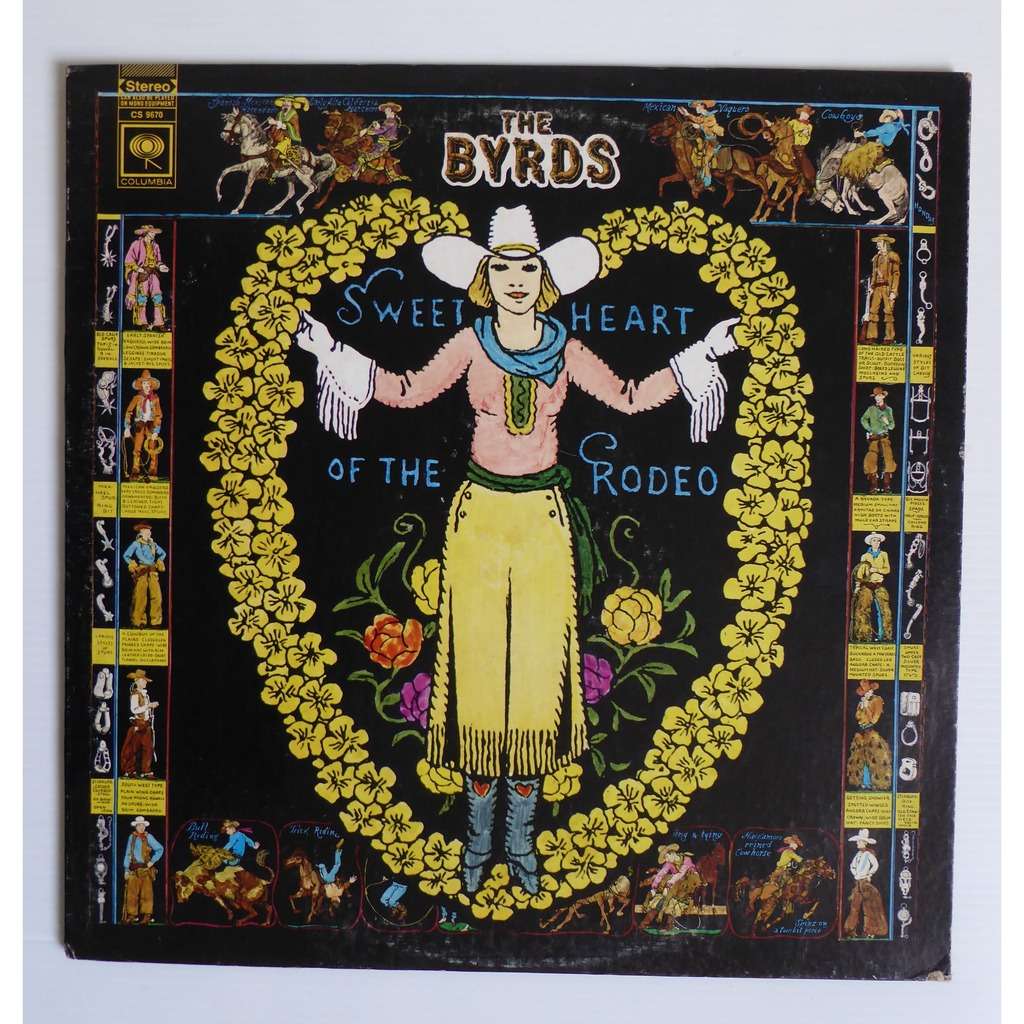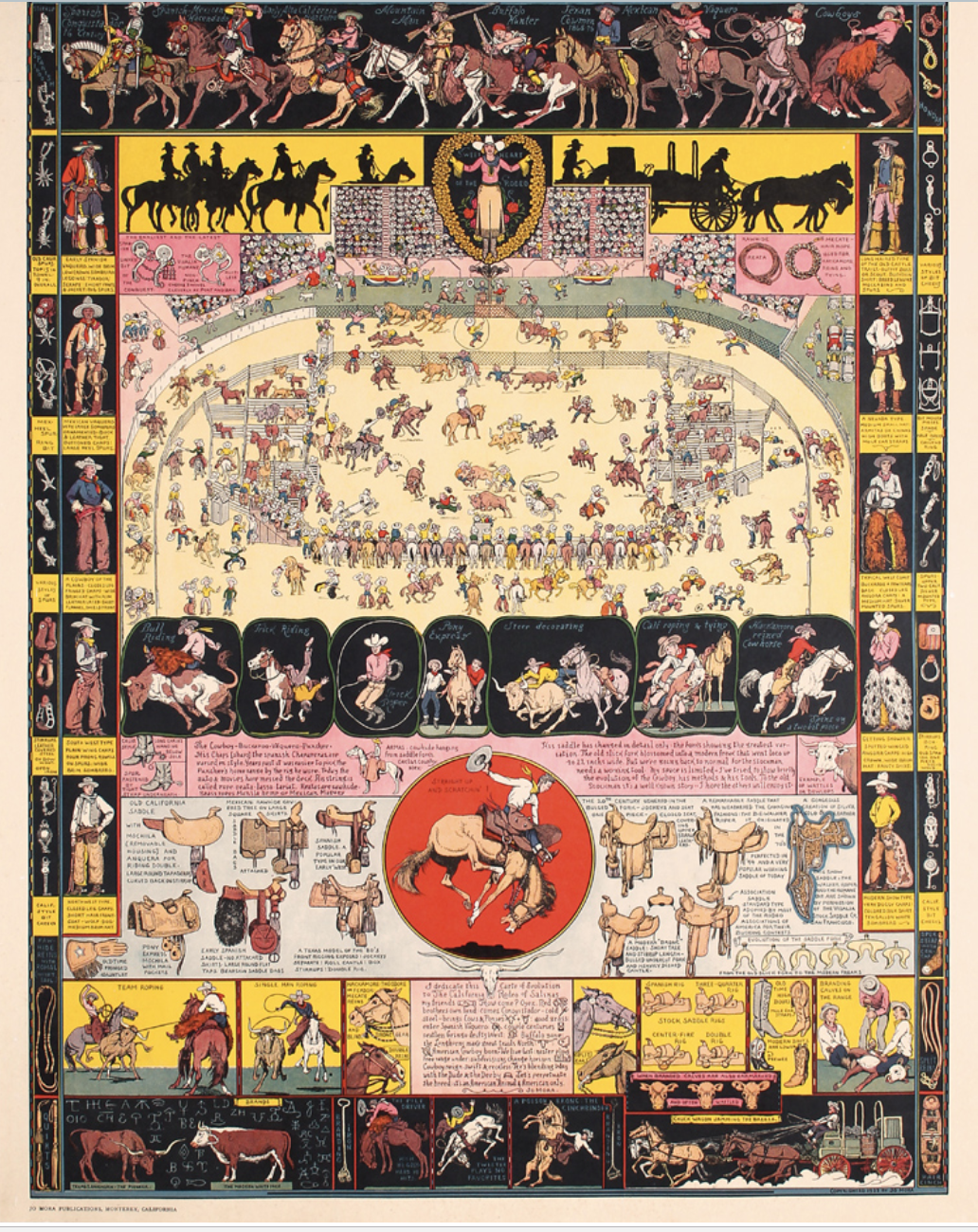
In the late 60s, the American rock band the Byrds were ripe for a change. The band’s fifth LP, The Notorious Byrd Brothers proved to be another sterling example of the band’s established psychedelic experimentation, but it also incorporated jazz, pop and the roots music leanings of folk and country rock. This stylistic elasticity made the band a perfect vessel for genre experimentation. The departures of band members David Crosby and Michael Clarke from the group in late 1967 left a directional void that was happily filled by their newest member Gram Parsons, and his trad country sensibilities.
Though Sweetheart of the Rodeo had disappointing sales on release (see below) the record proved to be highly influential on subsequent generations of musicians. Kind of like an Americana version of the VU debut ‘The Velvet Underground & Nico. ‘
Among those who took the contemporary take on the traditional sound heart was Marty Stuart, then a teenage bluegrass prodigy and later a hitmaking country star. Stuart owns the 1954 Fender Telecaster that previously belonged to the late Clarence White, who played guitar on the “Sweetheart†album; Stuart will play that guitar on the celebratory tour.
Founding Byrds members Roger McGuinn and Chris Hillman are currently on the road with Stuart and the Fabulous Superlatives — guitarist Kenny Vaughan, bassist Chris Scruggs and drummer Harry Stinson – to celebrate the 50th anniversary of “Sweetheart of the Rodeo.â€
Below are 5 things you may not know about the historic album.
1. Roger McGuinn floated the idea of including “experimental synthesizer music” on the album.
Chris Hillman revealed to journalist Richie Unterberger in 2000 that fellow band member Roger McGuinn
“…had thoughts of making the album after Notorious Byrd Brothers a double album that would cover everything from traditional folk to electronic synthesizer music.” But Hillman admits he doesn’t regret the decision not to include it on the album as it would “…make no sense.”
“It would have been an interesting separate project, but like I said earlier, either I didn’t understand what he (McGuinn) was doing, or I just didn’t like it. And he had that Moog synthesizer, of course, then, it was like owning a computer in 1955. It took up the whole room. It made a lot of noise. It wasn’t really musical. It was like a toy, a gadget. But it was interesting, I respect him. He was following something that intrigued him, and he likes electronics.”
2. The cover of the Sweetheart of the Rodeo was not an original work done for the album.
The exquisite folk-art album cover was made up of images from a 1932 Joseph Jacinto Mora poster, The American Cowboy Rodeo created for a 1940s California Rodeo Travel Poster.

3. The record was a flop when it was originally released in 1968.
Despite receiving generally favorable reviews from the critics, and regular play on underground FM stations, the country-rock style of Sweetheart of the Rodeo was such a radical departure from the band’s previous sound that large sections of the group’s counterculture audience alienation by the traditional style, resulting in the lowest sales of any Byrds album up to that point.
In an email from Roger McGuinn to Rick Campbell in 2008 “Our rock audience felt betrayed and the country community was wary of ‘hippies’ infiltrating their territory. I remember seeing the ‘Sweetheart of the Rodeo’ cover on a bulletin board at a country radio station in Los Angeles. I was overjoyed . . . until I got closer and saw written in red DO NOT PLAY – THIS IS NOT COUNTRY.”
4. SotR was not the first time The Byrds had delved into country music on an album.
On their second album “Turn! Turn! Turn!” the band included a cover of Red Hayes, Jack Rhodes’ “Satisfied Mind”, a 1955 country and western hit for Porter Wagoner, which had been suggested by The Byrds’ bass player, Chris Hillman.
In an email from Roger McGuinn to Rick Campbell in 2008 “The Byrds had experimented with country music as early as our second album ‘Turn! Turn! Turn! with tracks like ‘Time Between, ‘Satisfied Mind’ and ‘Girl With No Name’, but it wasn’t until Chris Hillman met Gram Parsons at a bank in Beverly Hills and brought him over to our rehearsal studio that we decided to go to Nashville and record an entire album of country material. We were in love with the genre and as sincere as we could possibly have been, in recording those songs.
5. Skeeter Davis supported the band after a “rebellious” Opry performance.
While in Nashville recording SotR, the Byrds were invited to appear on the Grand Ole Opry, at the Mother Church of Country Music, the Ryman Auditorium on March 15th, 1968. Singer-songwriter Tompall Glaser, who would become part of the “outlaw†moment the following decade, introduced the group, who were scheduled to play a Merle Haggard cover and a track from the upcoming album Sweetheart of the Rodeo. The band broke with the Opry’s history of strict bands playing approved setlists by instead performing Bob Dylan’s “You Ain’t Goin’ Nowhere,†which featured the iconic Lloyd Green on steel guitar and would be the opening track on Sweetheart of the Rodeo, Gram Parsons announced that instead of the planned “Sing Me Back Home,†they were going to play yet another track from the LP. He then dedicated their performance of “Hickory Wind†to his grandmother.
After their relatively rebellious performance and a chorus of boos from a visibly upset audience, they had one supporter, singer Skeeter Davis.
Roger McGuinn remembers “We walked out the back door with our tails between our legs, and Skeeter (Davis) caught up with us and said, “You Byrds don’t be afraid of these people: they’re just not caught up yet.” I told her later, “You were the only one who stood up for us. You were there for us, and I’ll never forget you for that.”
Sweetheart Of The Rodeo Tour Dates
Sept. 9 /// Folly Theatre /// Kansas City, MO
Sept. 12 /// Historic Gillioz Theatre /// Springfield , MO
Sept. 17 /// Albany, NY /// Hart Theater @ The Egg
Sept. 18 /// Albany, NY /// Hart Theater @ The Egg [Sold Out]
Sept. 20 /// Hopewell, VA /// Beacon Theatre [Sold Out]
Sept. 23 /// New York, NY /// Town Hall
Sept. 24 /// New York, NY /// Town Hall [Sold Out]
Sept. 26 /// Boston, MA /// The Emerson Colonial Theatre
Oct. 1 /// Louisville, KY /// Brown Theatre
Oct. 3 /// Akron, OH /// Akron Civic
Oct. 8 /// Nashville, TN /// The Ryman Auditorium
Oct. 10 /// Roanoke, VA /// The Jefferson Center
Oct. 15 /// Durham Performing Arts Center /// Durham, NC
Oct. 21 /// Byers Theatre /// Atlanta, GA
Oct. 23 /// EKU Center For The Arts/// Richmond, KY
Oct. 30 /// Carnegie Music Hall Of Homestead /// Munhall, PA
Nov. 9 /// Majestic Theatre /// Dallas, TX
Nov. 10 /// Austin City Limits Live at The Moody Theater /// Austin, TX
